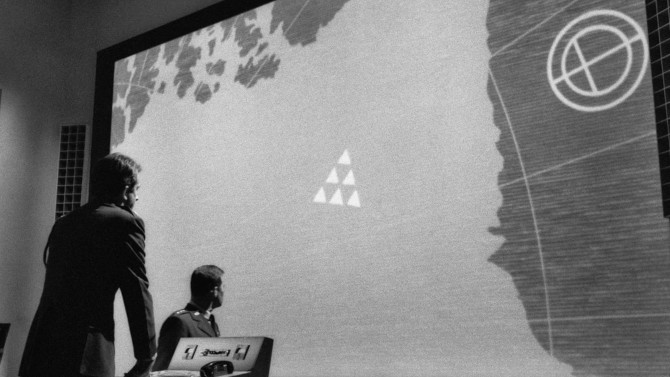
Safety First
Like a severe and utterly serious version of Stanley Kubrick’s 1964 satirical dark comedy Dr. Strangelove or: How I Learned to Stop Worrying and Love the Bomb, you would think that Fail Safe would have been the original release in theatres that was then later spoofed, yet that is not the case. Released approximately six months later in the same year, as you might imagine, it led to very poor returns at the box office – dare I say it (as the film deals with this subject matter)... it was a bomb! Despite that, over time, it has become a bonafide classic. Based upon Eugene Burdick’s 1962 novel of the same name and directed by Sidney Lumet (Dog Day Afternoon), he introduces us to our main players by way of little vignettes.
-
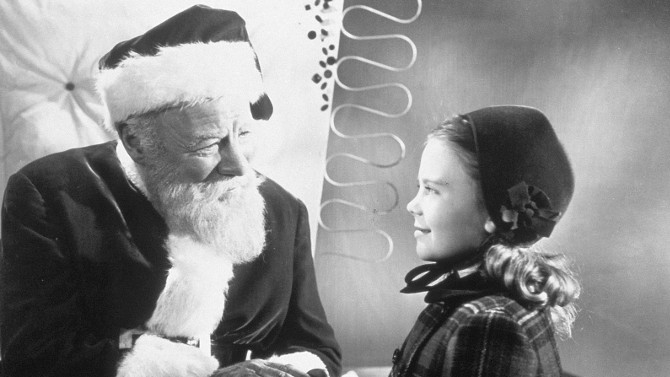
I Believe
Miracle on 34th StreetDecember 23, 2018A Christmas movie that is truly special has that moment. . . that specific sequence magically able to transcend the medium – enlivening our spirits, touching our hearts, rejuvenating the soul. . . a bell ringing – it giving an angel its wings; a humbug of a man able to get another chance at really living life; a family, despite all odds, getting home to their young son that has been left home alone; and, in today’s film, though the ending could arguably be it, a woman brings her newly adopted (orphaned) Dutch daughter to see Santa Claus at the mall, as the little girl truly believes she will be able to speak to him – her mother, knowing that he can’t speak the language, is gobsmacked when he starts to talk to her – bringing so much joy to her cherub-like face. Of course, you’ve probably guessed it, I am referencing George Seaton’s 1947 classic Miracle on 34th Street (he both writes and directs). After a drunk Santa is removed from his post during the Macy’s Thanksgiving Day Parade thanks to the complaint of Kris Kringle (Edmund Gwenn – winning an Oscar for the role), methodical event director Doris Walker (Maureen O’Hara) asks the man to don the suit – filmed during the actual parade.
-
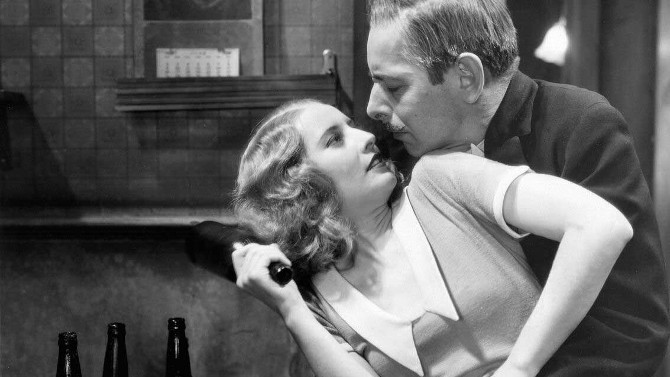
You’ve Got the Cutest Little Baby Face
Baby FaceDecember 12, 2018Arguably one of the most scandalous narratives to come out of the pre-code era, Alfred E. Green’s notorious 1933 romantic drama Baby Face was one of the films that was so very controversial that it ended up giving the Motion Picture Production Code (Hays Code) its bite – the reigning moral guide for the next thirty plus years. With a story from Darryl F. Zanuck (yes, the powerhouse studio head of 20th Century Fox – written under his pseudonym, Mark Canfield), the story follows Lily Powers (Barbara Stanwyck), aptly described by the bawdy tagline – “she had it and made it pay”.
-
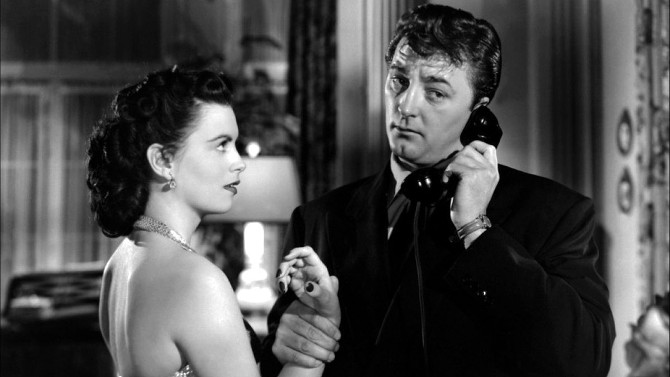
Life in the Fast Lane
Where Danger LivesNovember 29, 2018Imagine the scenario: a striking woman gets rolled into the hospital – an attempted suicide; a shapely mystery for a young doctor – with windswept hair and eyes that are as mesmerizing as a pool of slowly moving water. . . when he finally revives her, they look at each other. . . and time stops! Take one quick glance at the poster for Where Danger Lives, a thrilling 1950 film noir written by Charles Bennett (a man known to work with Hitchcock quite often in his earlier days – think The 39 Steps and Foreign Correspondent) and directed by John Farrow (Around the World in 80 Days and father of Mia), and you’ll know. . . the pair are in for quite the tempestuous roller coaster ride of a love affair.
-
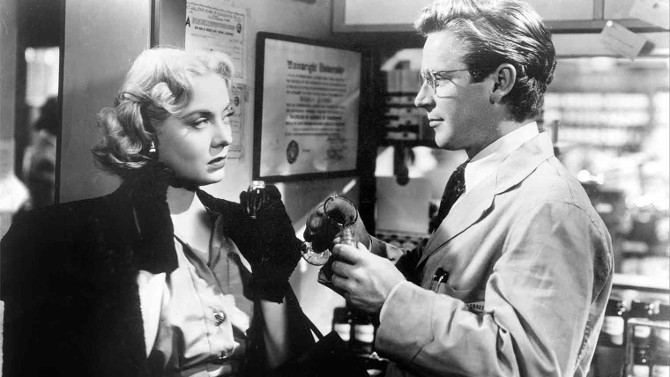
Rubber Band Man
TensionNovember 25, 2018You’ve gotta love a great film noir opening: “I’m Collier Bonnabel. I’m a cop. I’m a lieutenant detective in, uh, Homicide. That’s a fancy name for murder. We get plenty of tough cases. Solved most of them, sure. But how? I only know one way, one thing that breaks them wide open. Tension. I work on people, on suspects. Play up to them. Play up to their strengths, pour it on their weaknesses. Romance them or ignore them. Kiss them. Press them. But whatever way. . . keep stretching them. And when they get stretched so tight they can’t take it any longer: TENSION.” 1949's Tension, directed by John Berry, is narrated by Bonnabel (Barry Sullivan) – a hard-boiled, driven narrative that provides us with an intimate view into the detective’s mind. After this intriguing monologue (in which he speaks directly to the camera while playing with a rubber band), Tension opens with a prototypical film noir shot – a nighttime big city street, neon lights flashing, a pharmacy the main focal point.
-
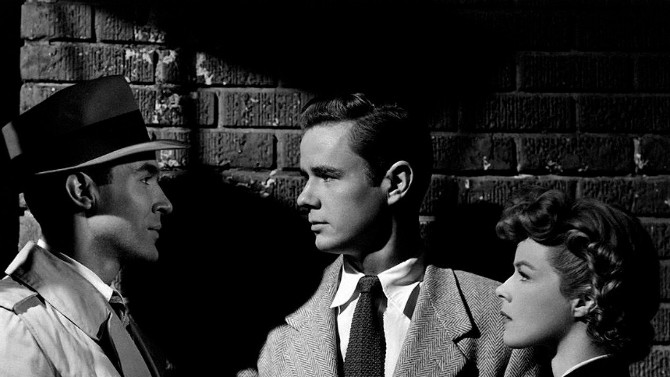
On the Road to Mystery Street
Mystery StreetNovember 20, 2018A film noir that would fit right into the fabric of twenty-first century television, Mystery Street, directed by John Sturges (The Magnificent Seven), is like an extended episode of CSI (or Criminal Minds), circa 1950 – a novel idea for the time. One of the first movies to be shot on location in Boston, in a way, it is a two pronged tale – demonstrating old-school investigative police work by State Police Lieutenant Peter Morales (Ricardo Montalban) and the avant-garde use of forensics by a Harvard doctor by the name of McAdoo (Bruce Bennett).
-
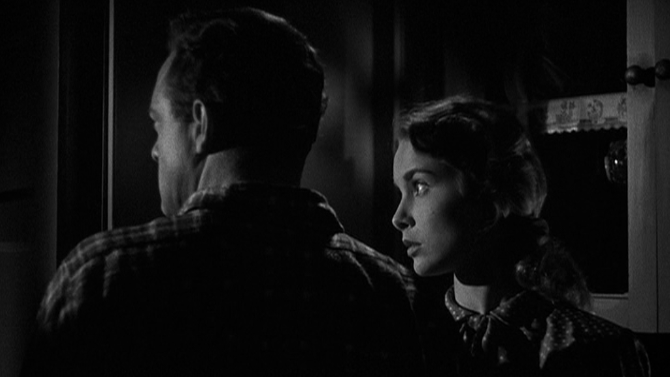
Post-War Noir
Act of ViolenceNovember 9, 2018A perfect example of ‘you can’t outrun your past, present or future’, 1949's Act of Violence, directed by Fred Zinnemann (High Noon; From Here to Eternity), starts with quite the hook: a man, limp noticeable, hurriedly, and with purpose, makes his way through a city in the clutches of the glum night, eventually entering a room that holds a deadly object – a gun. . . hopping onto a bus, it does not bode well. With a deliberate, unyielding presence, Joe Parkson (Robert Ryan – for another one of his great film noirs, see The Set-Up) is the thing of nightmares. . . a stalking figure in trench coat and fedora – the Michael Myers of the noir genre. Ryan, with his lined face, imposing size, and disturbed demeanor, is an ominous heavy – the enigmatic grunt opening a phone book and circling the name of one Frank R. Enley (Van Heflin).
